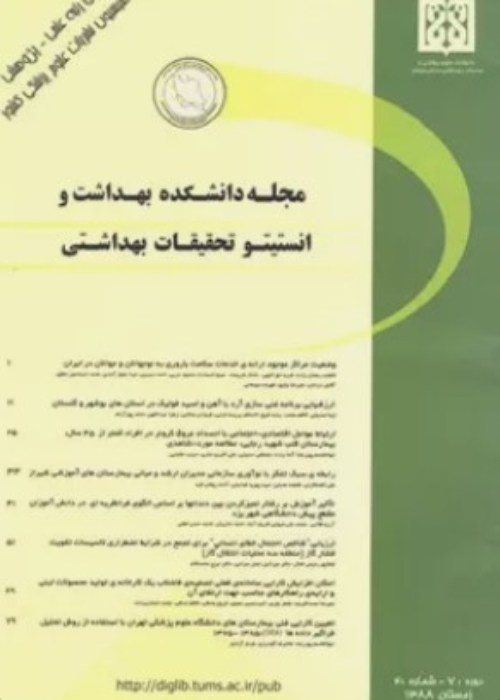Assessment of Cardiovascular Diseases Risk Factors in the Staff of Mashhad University of Medical Sciences Using on a Multilevel Analysis Approach
Cardiovascular diseases (CVD) are the leading cause of death globally, causing annually 17.3 million deaths, more than 75% of these deaths occurring in the low- and middle-income countries. Although extensive studies have been conducted to determine the risk factors for these diseases, limited studies have been performed to investigate these factors using a multilevel analysis method. The aim of this study was to determine the CVD risk factors in the staff of Mashhad University of Medical Sciences using a multilevel analysis approach, as well as compare the application of the conventional and multilevel logistic regressions in doing this according to the hierarchical structure of the data.
This was a case-control study including a total of 1091 randomly selected individuals from among the people in a prospective cohort study, namely, the “PERSIAN Cohort Study in Mashhad University of Medical Sciences”. The case group included 152 patients with a definite diagnosis of CVD and the control group 939 staff members not suffering at the time from CVD. Data analysis was done using the STATA software. Data analysis (based on frequencies and percentages) was done using one-way and two-level logistic regression analysis at α = 0.05.
Multivariate analysis showed that hypertension, smoking, fasting blood sugar and cholesterol were among the cardiovascular risk factors with a significant relationship with the disease. Based on the two-tier logistic regression model, the odds ratio for CVD in the hypertensive patients was 3.93 times that in individuals with a normal blood pressure with a confidence interval of 2.64-6.28. The risk in smokers was 1.85 (1.11-3.09) times that in nonsmokers. The CVD odds ratio in individuals with a high fasting blood glucose level (undiagnosed/uncontrolled diabetes) was 2.7 (1.18-6.18) times that in those with a normal blood pressure. There were no statistically differences between the case and control groups as regards the other variables ─ body mass index, diabetes (controlled or uncontrolled), or blood triglyceride level.
The findings show that statistical model selection can influence the results of data analysis in a dataset. It should be noted that the results of this study indicate a high prevalence of some cardiovascular risk factors among the staff. Another crucial point in this study is that the level of physical activity of the staff was found to be low, which would result in increased risk of overweight and obesity.
- حق عضویت دریافتی صرف حمایت از نشریات عضو و نگهداری، تکمیل و توسعه مگیران میشود.
- پرداخت حق اشتراک و دانلود مقالات اجازه بازنشر آن در سایر رسانههای چاپی و دیجیتال را به کاربر نمیدهد.


